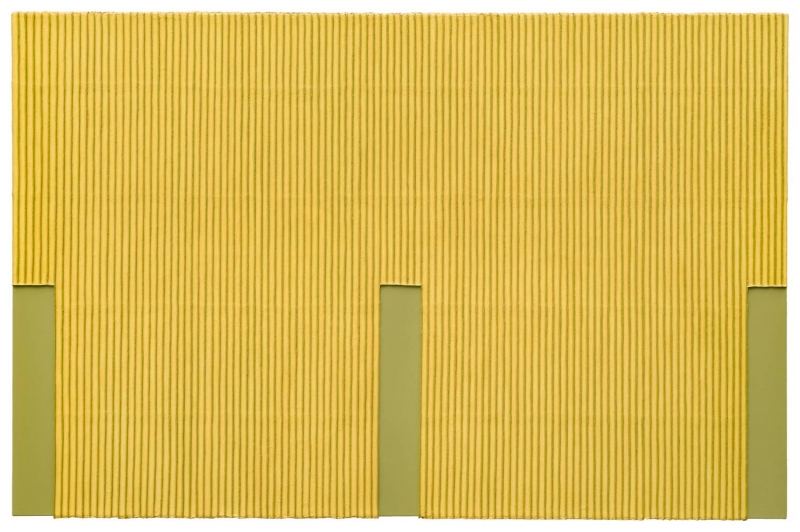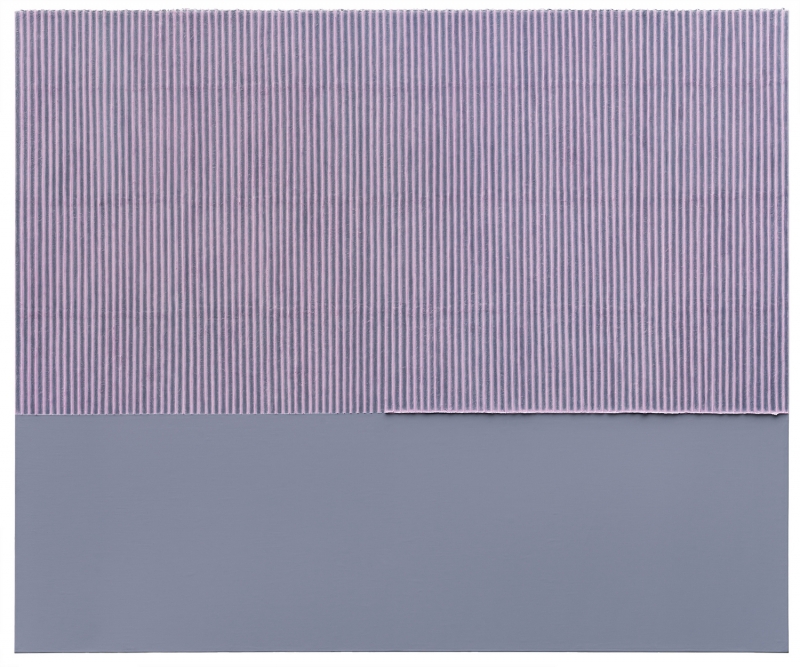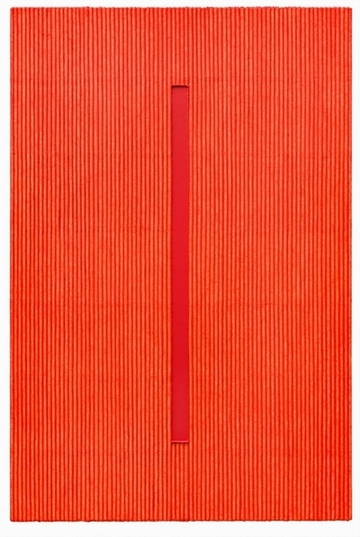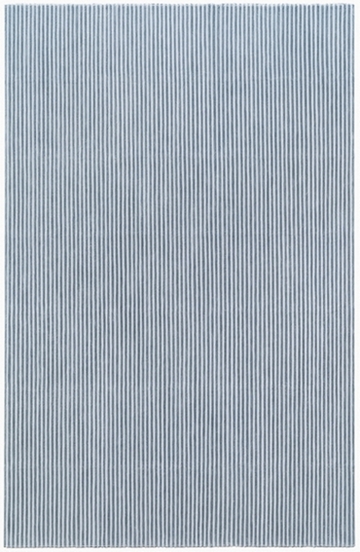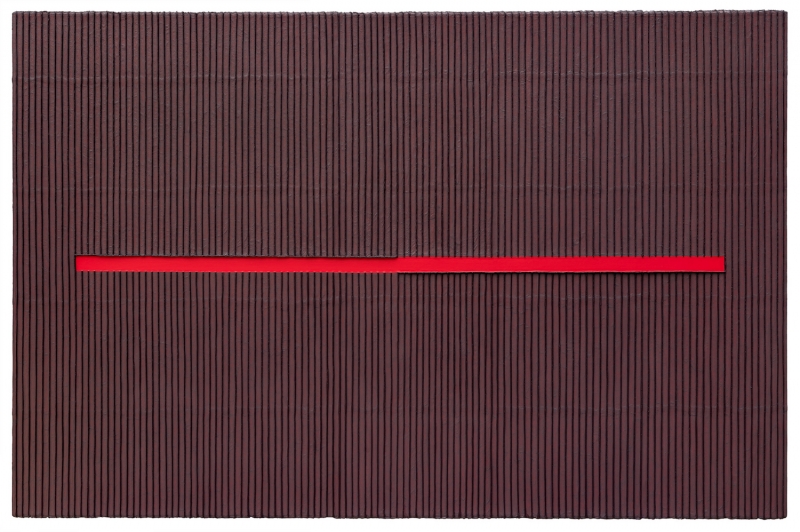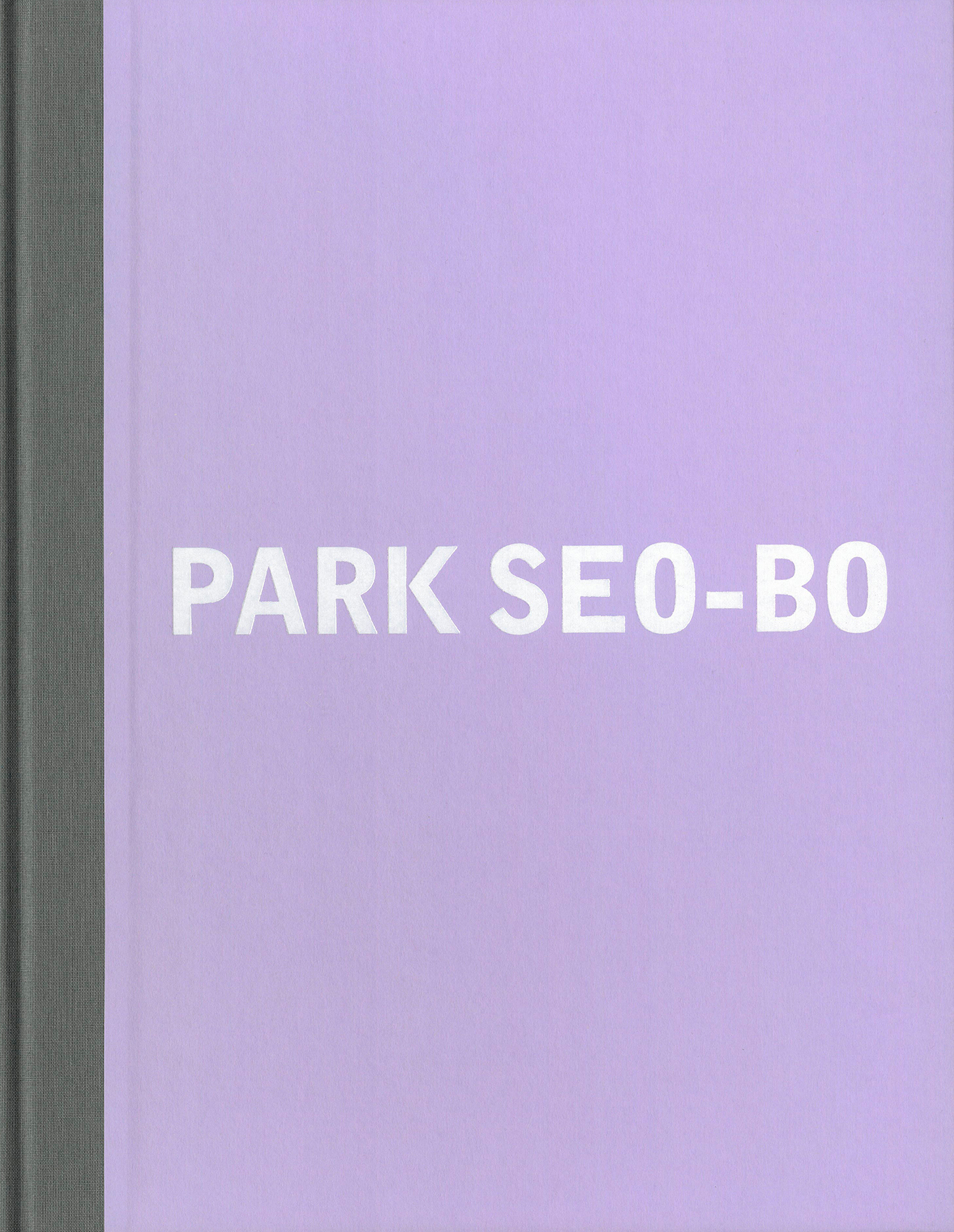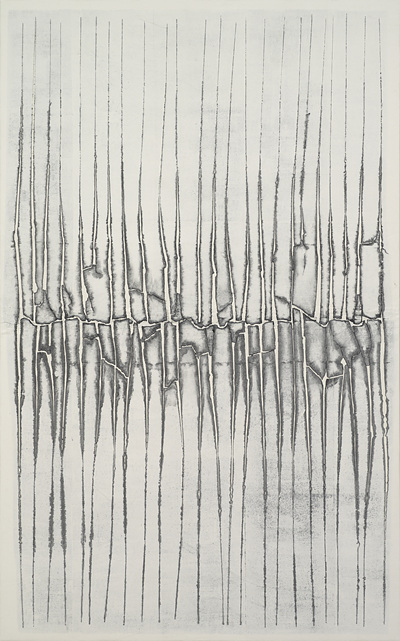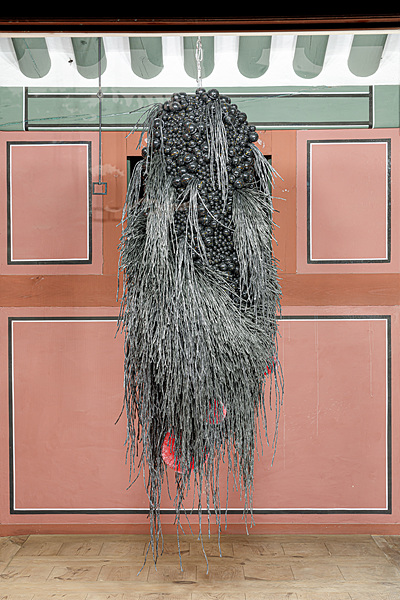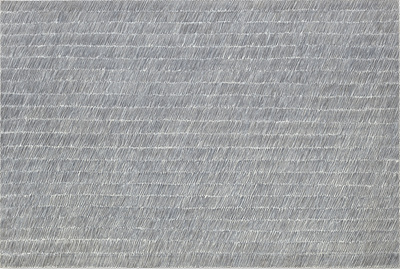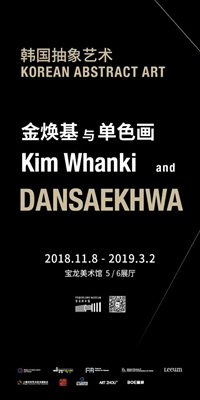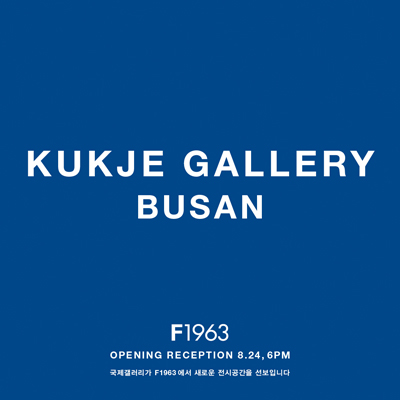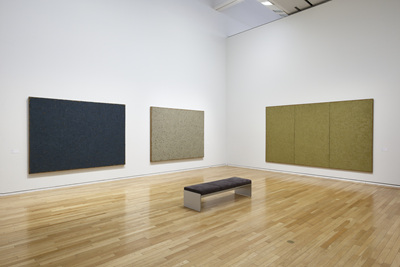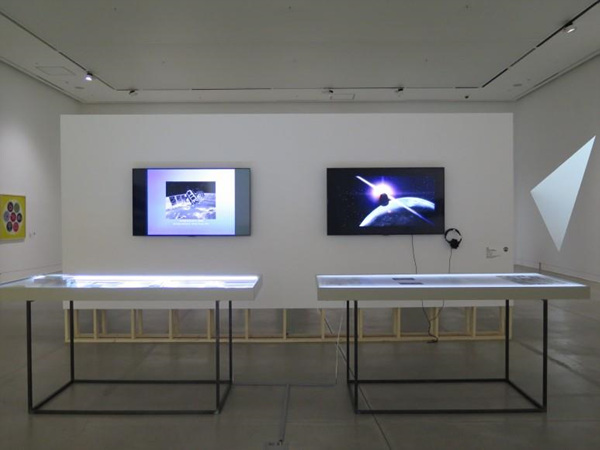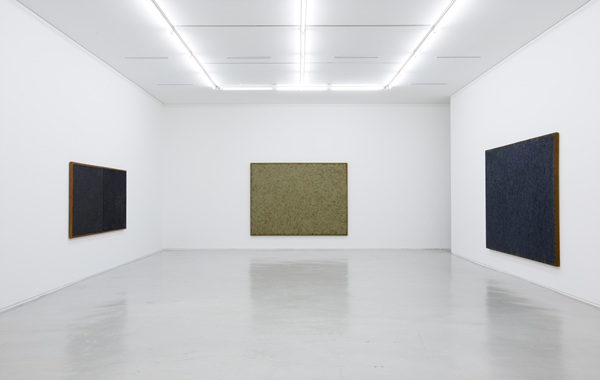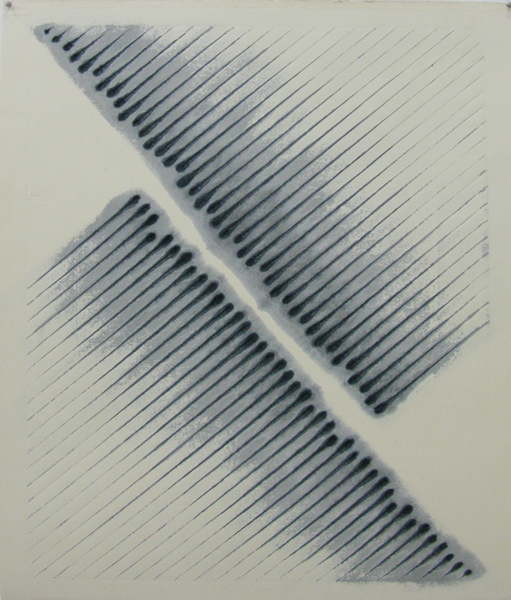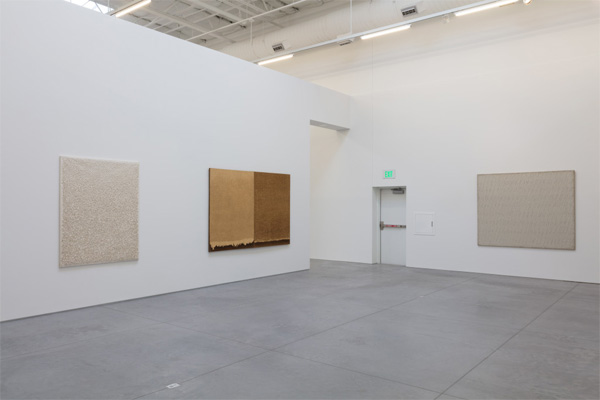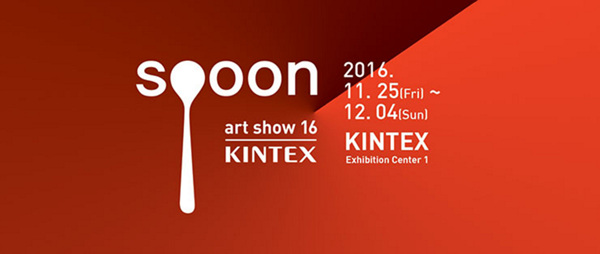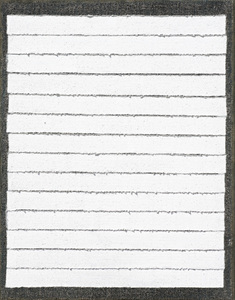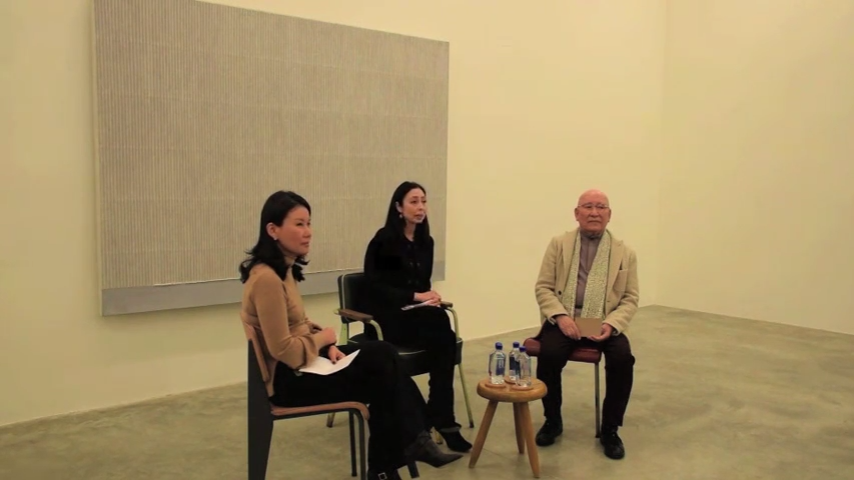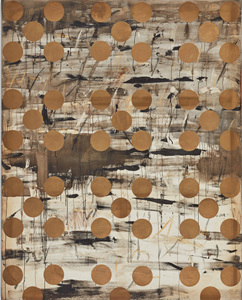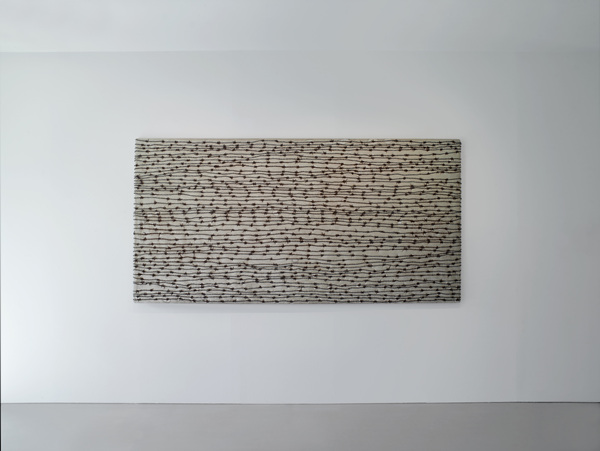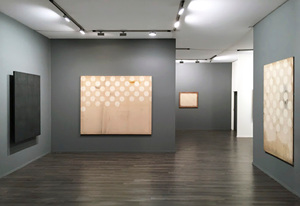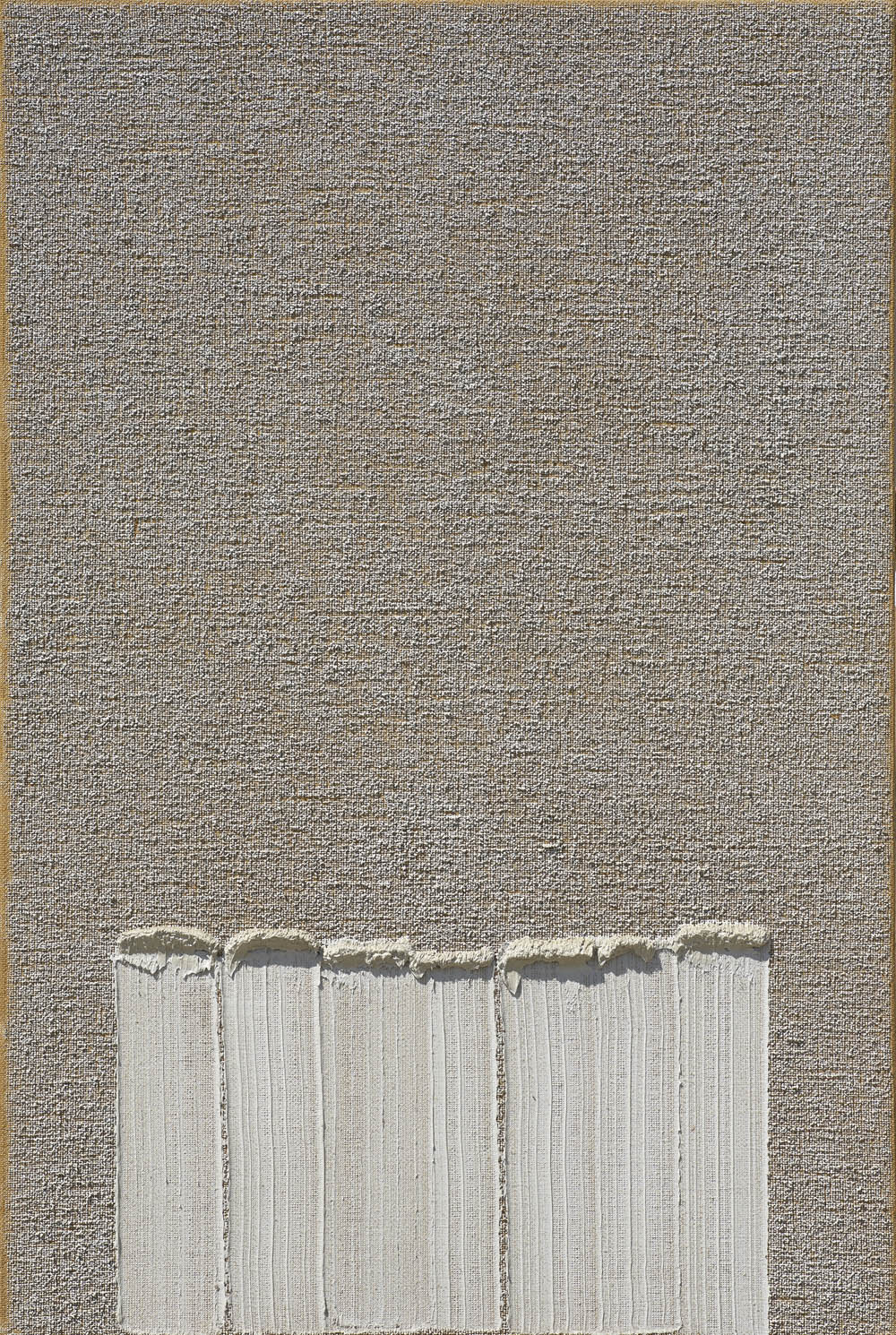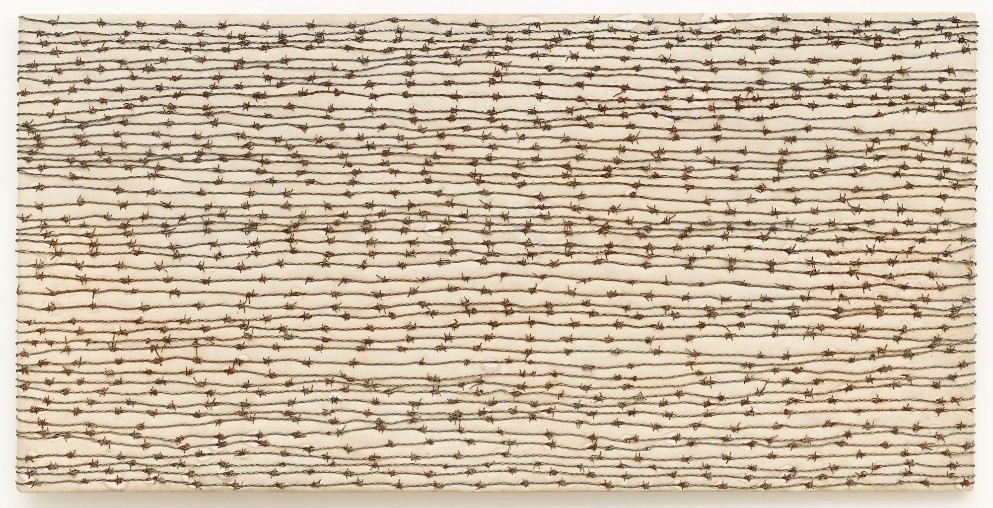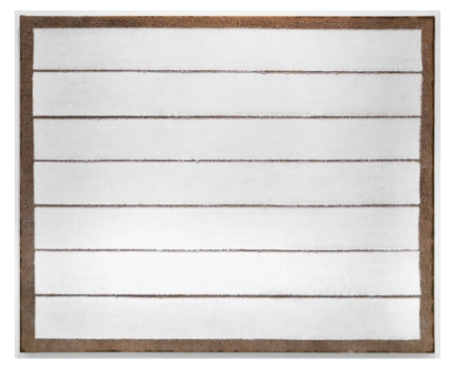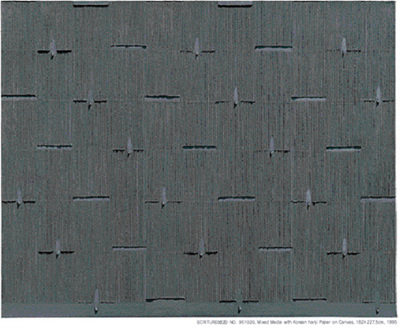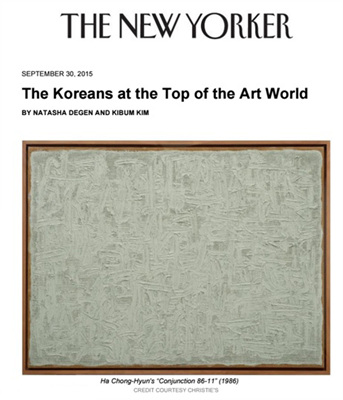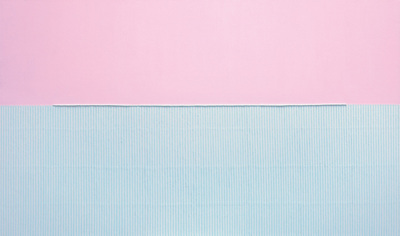 Park Seo-Bo | KUKJE GALLERY
Park Seo-Bo | KUKJE GALLERY
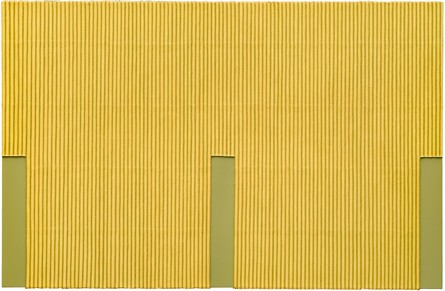
Sep 15, 2021 - Oct 31, 2021
INTRODUCTION
Park’s Écriture (描法, myobop) series is often divided into three phases: the early-Écriture (or pencil-Écriture) of the 1970s, mid-Écriture of the 1980s, and late-Écriture (or color-Écriture) beginning in the 2000s. If the artist focused on emptying and disciplining himself through repetitive action through his early-Écriture series, his late-Écriture series seeks unity with nature by creating compositions defined by symmetrical reliefs modeled directly on the canvas, instead of emphasizing the traces of his hand. These elements consist of three layers of traditional Korean paper hanji, which has been soaked in water for more than two months. Built up on the canvas in concise but organic furrows, Park then draws lines with a thick graphite pencil before the surface dries. As a result of these line-drawings, the wet hanji is pushed from side to side to form symmetrical sculptural elements, reminiscent of the ridges between rice paddies. When the hanji dries, the artist adds acrylic paint to the surface to embody the natural scenery that inspires him. Through this repetitive action, the completed works manifest accumulated time, creating a rhythm where Park’s philosophy and vision are interwoven.
Colors have always played a pivotal role in revealing Park’s innermost thoughts and intentions. The artist primarily used black for his Primordialis series (from the early 1960s) to express feelings of anxiety and ambivalence following the rapidly changing postwar era. Then, he applied the Korean obangsaek (traditional Korean colors of white, black, blue, yellow, and red) in his Hereditarius series (from the late 1960s) as he began to think about his practice in relation to the Western geometric abstraction. Park deliberately chose white for his early-Écriture series (from the 1970s to the mid-1980s), in which he explored the idea of “emptying” and sought to curtail his attention to color. Ultimately, the artist began using intense, vivid colors after 2000—this radical departure was in part a response to the fear he felt in the face of digital technology. Despite this massive shift in social values and media, and Park’s observation that digital culture marked a universal change, the artist could not help but lament that he could not “catch up with the pace of rapid change.” In other words, Park was confronted by the harsh reality that art was at a crossroads and, in response, he considered putting an end to his practice. Instead, this conflict led to another breakthrough, again characterized by color.
Park’s late-Écriture paintings were born through a process of redefining the role of painting in an era where images proliferate and painting no longer functions as a tool for self-expression. Instead of forcing a message or controlling the viewing experience, Park creates work that absorbs the viewer’s stress and anxiety—instilling meditation and rhythmic vitality on the canvas. This absorption underscores the fact that the artist calls his paintings heup-in-ji, or blotting paper. This focus on a new kind of painting can also be seen in Park’s definition of Dansaekwha as consisting of three attributes: the futility of action, the infinite repetition of action, and the spiritualization of the traces (materiality) created in the process of action.
Park Seo-Bo is known as the ”father of Korean contemporary art,” a status framed in part by his claim that art is a “methodology,” a radical departure overturning traditional painting philosophies. Having worked with oil paint and pencil on canvas in his earlier works, he began incorporating hanji from the 1980s. Unlike the Western paper pulp that reflects color, hanji absorbs light, harmonizing with Park’s philosophy of art practice and materials becoming one with nature. His method of leaving traces, making furrows and shading areas by repetitively mark-making with a pencil while the hanji is still moist, can be interpreted as making the drawing tool subservient to the primitive materiality of the ground. As a result, only the process and intention remain on the canvas, instead of the traces of his pencil.
Similarly in his use of color, Park challenges Western dichotomous thinking, eschewing the individualistic propensity to think in terms of binary opposition, such as “subject and object” and “human and nature.” When naming the colors used in his paintings, Park uses common nouns that mainly describe elements of nature, instead of referring to a schematized palette. This comes from Park’s desire to not merely express a single color but convey the nuances of that colored subject, thus becoming a complete and comprehensive tone, and reflects the artist’s belief that color beholds the viewer's holistic experience with the work. This exhibition offers an opportunity to experience colors that Park Seo-Bo translates from his unique perception of nature onto the canvas such as air, cherry blossoms, canola flowers, and wine, which are showcased in the front gallery of K1, of which the window faces the iconic streets of Samcheong-dong; while hues of ripe persimmon, maple leaves, and golden olives echo in the rear gallery.
Artist Information
Following his first university lecture in 1962, Park Seo-Bo (b.1931) has taught as a professor (1962-1997) and was the Director (1986-1990) of the College of Fine Arts at Hong-Ik University. In 2000, he was appointed Professor Emeritus at the same university, and served as chairman (1977-1980) as well as advisor (1980) of the Korean Fine Arts Association. He has held solo exhibitions at leading domestic and international institutions including major retrospective exhibitions at the National Museum of Modern and Contemporary Art (hereafter the MMCA), Seoul, and Langen Foundation, Neuss, in 2019, and the Musée d’art moderne et contemporain de Saint-Étienne Métropole in 2006. In addition, he participated in major biennales including the 13th Biennale de São Paulo (1975); the 8th Biennale de São Paulo (1965); and the 3rd Biennale de Paris (1963), and presented his works in important international group exhibitions, Korea: Five Artists, Five Hinsek ‘White,’ Tokyo Gallery, Tokyo (2018); Korean Abstract Art: Kim Whanki and Dansaekhwa, Powerlong Museum, Shanghai (2018-19); When Process Becomes Form: Dansaekhwa and Korean Abstraction, Boghossian Foundation, Brussels (2016); the official collateral exhibition of the 56th Venice Biennale Dansaekwha, Venice Biennale, Venice (2015); Korean Dansaekhwa, the MMCA, Gwacheon (2012); and Working with Nature: Traditional Thought in Contemporary Art from Korea, Tate Liverpool, Liverpool (1992). His works are housed in the collections of renowned institutions all over the globe including the MMCA, Korea; Museum of Contemporary Art, Tokyo; Centre Pompidou, Paris; Guggenheim Abu Dhabi; and M+, Hong Kong.
국제갤러리는 9월 15일부터 10월 31일까지 K1에서 박서보 작가의 개인전을 개최한다. 그간 국제갤러리와 박서보는 국제갤러리(2014), 제56회 베니스 비엔날레(2015), 벨기에 보고시안 재단(2016), 상하이 파워롱미술관(2018) 등에서 열린 유의미한 그룹전들을 통해 단색화를 전세계에 알리는 여정을 함께 해왔으나, 개인전은 이번이 2010년 이후 두번째이다. 회화에 동아시아의 자연과 예술에 대한 관점을 담아냄으로써 한국의 모더니즘을 선도했다 평가받는 박서보는 줄곧 ‘왜 회화 작업을 하는가?’의 근본적인 질문을 던지며 변화하는 시대상에 부응하는 새로운 작업방식을 모색해왔다. 그의 ‘후기 묘법’ 내지는 ‘색채묘법’으로 알려진 2000년대 이후 근작 16점을 소개하는 이번 전시는 관람객들에게 자연에서 발견되는 선명한 색감과 주변 도시 경관의 보다 단조로운 색감이 혼재된 치유의 공간을 선사한다.
묘법 연작은 흔히 1970년대 초기(연필) 묘법, 1980년대 중기 묘법, 2000년대 이후의 후기(색채) 묘법으로 구분된다. 연필묘법이 반복되는 행위를 통해 자신을 비우고 수신하는 과정에 중점을 두었다면, 색채묘법은 손의 흔적을 강조하는 대신 일정한 간격의 고랑으로 형태를 만들고 풍성한 색감을 강조하여 자연과의 합일을 추구하는 작가의 대표 연작으로 자리매김했다. 작품 제작을 위해 작가는 두 달 이상 물에 충분히 불린 한지 세 겹을 캔버스 위에 붙이고, 표면이 마르기 전에 흑연 심으로 이뤄진 굵은 연필로 선을 그어 나간다. 연필로 긋는 행위로 인해 젖은 한지에는 농부가 논두렁을 갈 때와 마찬가지로 좌우로 밀려 산과 골의 형태가 만들어진다. 물기를 말린 후 스스로 경험한 자연 경관을 담아 내기 위해 표면에 아크릴 물감을 덧입힌다. 이렇게 연필로 그어내는 행위를 반복해 완성된 작품에는 축적된 시간이 덧입혀지고, 작가의 철학과 사유가 직조한 리듬이 생성된다.
박서보의 회화에서 색은 시대상을 드러내는 중추적인 역할을 해왔다. 전후 시기의 원형질 연작에서는 급변하는 세계에 대한 불안의 정서를 표현한 검은색, 1960년대 후반 서양의 기하학적 추상에 대응해 전통에 대해 고민하기 시작한 유전질 연작에서는 전통적인 오방색, 그리고 1970년대에 ‘비움’을 몸소 실천한 연필묘법 연작에서는 색 자체에 큰 의미를 두지 않기 위해 흰색을 선택했다. 그러던 그가 2000년 이후 강렬하고 선명한 색감들을 사용하기 시작했는데, 이 급진적인 시도는 아날로그 방식에 익숙하던 그가 새로운 디지털 문명을 대면하며 느낀 공포심과 무관하지 않다. 디지털 문명으로의 대대적인 전환이 현대인들 누구나 겪는 시대적 변화임에도 불구하고, 시대상을 녹인 작업을 이어오던 그에게 ‘더 이상 변화의 속도를 따라잡을 수 없겠다’는 위기감이 엄습했고, 이는 스스로 작업 중단까지 고려하기에 충분한 배경이 되었는데, 그 끝에서 작가가 찾은 돌파구는 다시금 색이었다.
각종 이미지가 무차별적으로 범람하는 시대, 회화의 역할을 재정립하는 과정에서 탄생한 색채묘법 연작에서 회화는 더이상 자기표현의 도구로 기능하지 않는다. 작가는 관람객에게 의도된 경험을 강요하거나 메시지를 던지는 대신, 화면에 정적인 고요함과 리듬감 있는 활력만을 남겨 보는 이의 스트레스를 흡인(吸引)하는 장을 만든다. 이는 그가 스스로의 작품을 ‘흡인지’라 일컫는 이유이기도 하다. ‘한국 현대미술의 아버지’라 불리는 그가 단색화를 “행위의 무목적성, 행위의 무한반복성, 행위과정에서 생성된 흔적(물성)을 정신화 하는 것”의 세 가지 요소로 정의 내린 사실도 이 같은 회화의 새로운 역할을 뒷받침한다.
미술이 곧 방법론임을 주장하는 박서보는 여러 측면에서 회화에 내재한 기존 질서들을 전복한 것으로 평가받는다. 캔버스에 유화물감과 연필로 작업해오던 그는 1980년대 이후 한지를 사용하기 시작했다. 서양의 종이와는 달리 색과 빛을 흡수하는 성질의 한지는 ‘물아일체’를 실행하고자 하는 작가의 동양적 철학과 일맥상통하는 매체였다. 더 나아가 그 위에 흔적을 남기는 방식, 즉 한지가 젖어 있는 동안 연필을 반복적으로 사용해 골을 만들고 음영을 부여한 건 연필이라는 도구를 종이의 원초적인 물질성에 굴복시켰다고 해석할 수 있다. 그 결과 화면에는 연필의 흔적이 아닌 과정과 질서만이 오롯이 남게 되기 때문이다.
색의 사용에 있어서도 마찬가지로 박서보 작가는 ‘주체와 대상,’ ‘인간과 자연’ 등의 대립항들로 분류해 접근하는 서양의 이분법적 사고방식과 명명법에 도전해왔다. 색을 일컬을 때 도식화된 컬러판을 참고하는 대신 주로 자연을 칭하는 일반명사들을 차용한 건 그런 일환일 것이다. 이는 작가가 표현하고자 하는 색이 단수가 아니라 대상이 전하는 뉘앙스까지 포괄하는 온전하고 종합적인 색(감)이기 때문이며, 동시에 관람객의 체험을 전제로 하는 색이기 때문이다. 예컨대 이번 전시에서도 삼청동의 풍경을 면하고 있는 창이 난 K1 공간에서는 공기색, 벚꽃색, 유채꽃색, 와인색을, 그리고 K1의 안쪽 전시장에서는 홍시색, 단풍색, 황금올리브색 등 박서보가 자연에서 화면으로 유인한 색을 경험할 수 있는 기회를 제공한다.
작가 소개
박서보(b.1931)는 1962년 처음 강단에 선 후 홍익대학교 미술대학 교수(1962-1997) 및 학장(1986-1990)을 역임했다. 2000년에는 명예교수로 임명되었으며 한국미술협회 이사장(1977-1980) 및 고문(1980)으로 활동하기도 했다. 2019년 국립현대미술관 서울관에서 열린 대형 회고전을 비롯, 같은 해 독일 랑엔 재단(Langen Foundation), 2006년 프랑스 메트로폴 생떼띠엔느 근대미술관 등 국내외 유수 기관에서 개인전을 개최했다. 이 외에도 1975년 《제13회 상파울루 비엔날레》, 1965년 《제8회 상파울루 비엔날레》, 그리고 1963년 《제3회 파리 비엔날레》 등 다수의 국제전에 참여한 바 있으며, 2018년 동경화랑 《한국 5인의 작가: 다섯 가지 흰색》, 중국 상하이 파워롱미술관 《한국의 추상미술: 김환기와 단색화》, 2016년 브뤼셀 보고시안 재단 《과정이 형태가 될 때: 단색화와 한국 추상미술》, 2015년 베니스 비엔날레 공식 병행전시 《단색화》, 2012년 국립현대미술관 과천관 《한국의 단색화》, 1992년 영국 테이트 갤러리 리버풀 《자연과 함께: 한국 현대미술 속에 깃든 전통정신》 등의 단체전에서 작품을 선보였다. 작품의 주요 소장처로는 국립현대미술관, 도쿄도 현대미술관, 파리 퐁피두 센터, 구겐하임 아부다비, 그리고 홍콩 M+ 등이 있다.
WORKS
|
Écriture (描法) No. 140410 |
Écriture (描法) No. 060910-08 |
|
|
Écriture (描法) No. 080821 |
Écriture (描法) No. 161120 |
|
|
Écriture(描法) No. 120715 |
INSTALLATIONS
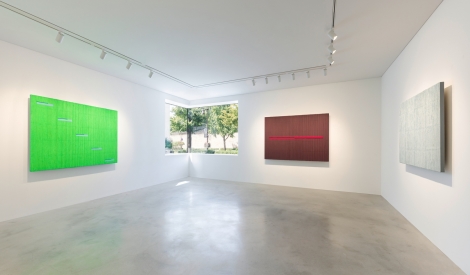
|
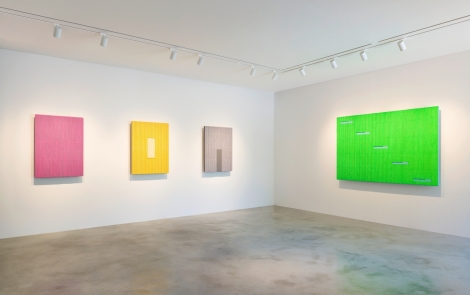
|
|
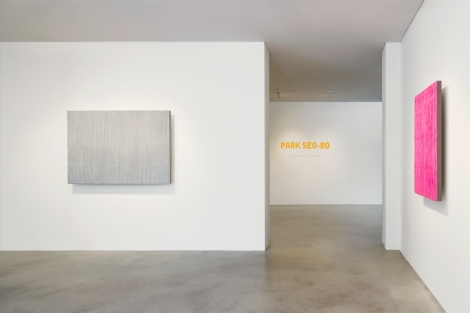
|
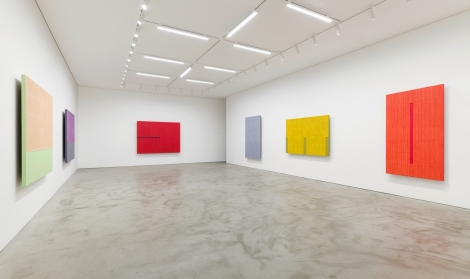
|
|

|

|
|
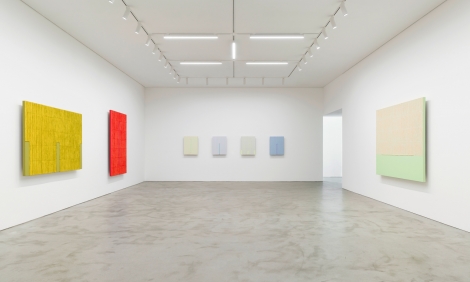
|

|
|
VIDEOS
|
Installation Video |
Virtual Exhibition |
|
|
Teaser Trailer |
PUBLICATIONS
| PARK SEO-BO |
MEDIA COVERAGE
일간지
월간지
주간지/웹
